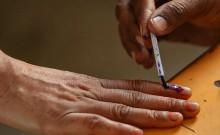
April Fools' Day 2016 is just around the corner and people are planning interesting pranks on their colleagues, friends and family members. Fooling people is surely not a good thing, but people play harmless pranks April 1 just as a friendly gesture.
Also known as All Fools' Day, there will be plenty of websites and news channels who will try to fool their viewers/readers. Meanwhile, check out a few fun and interesting facts about this day.
- Some historians believe that April Fools' Day is a calendar error made by France. In 1852, the country switched from the Julian calendar to the Gregorian calendar. Apparently, this made the New Year's Day shift to Jan. 1 from April 1. Thus, people who celebrated New Year on April 1 were labeled a fool.
- This day became popular in Britain in the 18th century. English people made April Fools' Day famous by playing practical jokes on friends, relatives and colleagues.
- In Scotland, the tradition became a two-day event. First day was known as "hunting the gowk" (gowk is a word for cuckoo bird, a symbol for fool) and the next was Tailie Day, which involved pranks by sticking notes on people's butts.
- In 1957, the BBC had reported that Swiss farmers were having a record year with their spaghetti crop and showed footage of people harvesting noodles from trees.
- In 1998, after Burger King advertised a "Left-Handed Whopper," scores of customers were trapped in this fools' game and requested the fake sandwich.
- On April 1, 1945, when a powerful tsunami took several lives, the entire population of the pacific island ignored the weather warning as they thought it was an April Fools' hoax.
- In 1986, the tradition of an annual New York City April Fools' Day parade began. It started as a prank that later turned into a tradition and a press release of this parade is created every year, but no parade occurs.
Credit: history.com, edition.cnn.com, aprilfoolsdayparade.com
Related








![India Auto Roundup: Maruti Suzuki, Mahindra have exciting launches in November [details here]](https://data1.ibtimes.co.in/en/full/805520/india-auto-roundup-maruti-suzuki-mahindra-have-exciting-launches-november-details-here.jpg?w=220&h=138)








